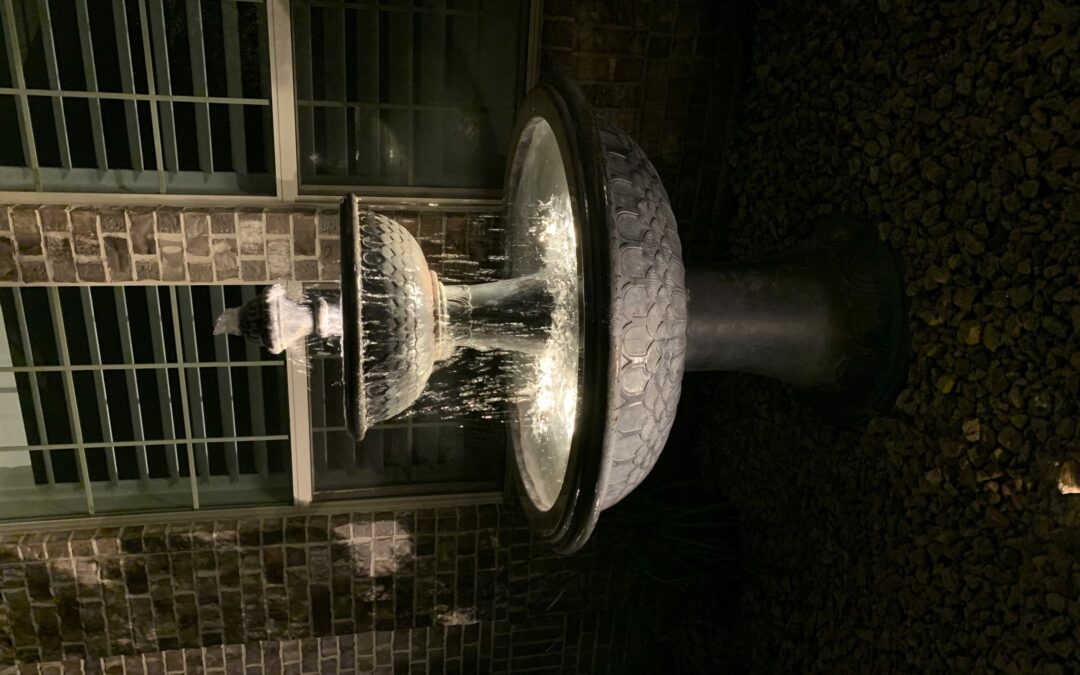Voltage Drop…It’s important stuff!
I do not intend on diving into all the technical and mathematical details on voltage drop, but I do think it is worth addressing. Several of our customers either have lighting systems that have lived their lifespan, or they would like to upgrade to additional higher quality fixtures. More times than not, as I check amperage and voltage, I determine that their original system was not installed with voltage drop in mind.
Think about voltage the same as a garden hose (low voltage wire) with holes (Light fixtures) drilled every several inches and capped off at the end. (Last fixture on the wire run) When you turn the water on (electricity), you can expect the highest pressure (voltage) of water from the holes closest to the water supply (Transformer) and the least amount of water from the last holes of the hose. (Last fixture on the wire run) (End of wire run) Eventually, the water will cease to flow to the end holes unless you increase the diameter of the hose (wire) or shorten the length of the hose. (Length of wire)
Low voltage light fixtures require a minimum amount of voltage to operate efficiently. If a system is installed with improper voltage drop considerations, the fixtures may still operate but this lack of power will significantly reduce the fixture and or lamp’s life expectancy.
Two very common mistakes that inexperienced installers make are:
- They do not design the system and wiring of the fixtures and count for voltage drop considerations. (You would be shocked at how many designers skip this critical step)
- Their design of the wiring plan ASSUMES a voltage output from the transformer. This assumption is not the way to go, for when we are at home in the evening watching TV, running the air conditioner, turning lights on in the house, etc., the actual voltage coming from the highest quality transformers might not be what the transformer terminal states. In other words, the installer might have a wire run connected to the 12-volt terminal in the transformer and expect 12 volts to flow. Problem is, during higher energy consumption, that 12 volts terminal might very well be only 11 volts.
So, what is a homeowner to do? Easy…ask the salesperson / installer how they calculate for voltage drop and what would their targeted voltage be at the end of each of their wire runs. Then, request that they send you the specification sheet for the fixtures they intend on using and compare their target with the manufacturer’s minimum voltage requirement. If you get anything other than clear, concise, and obviously educated answers to these questions, you are probably speaking with the wrong installation company.
